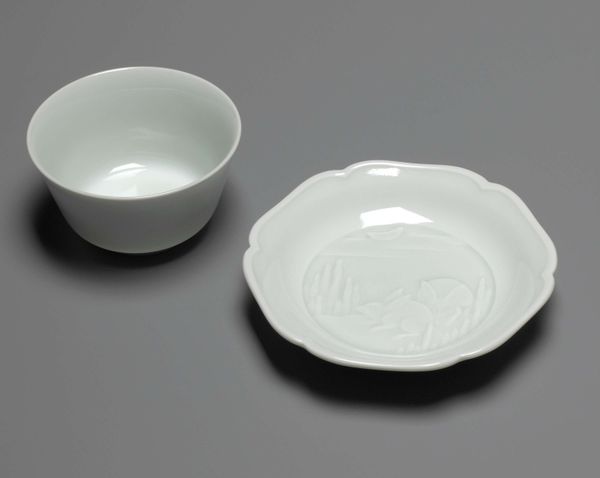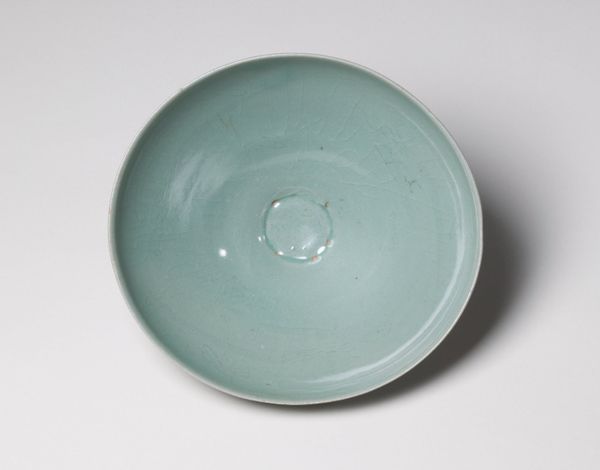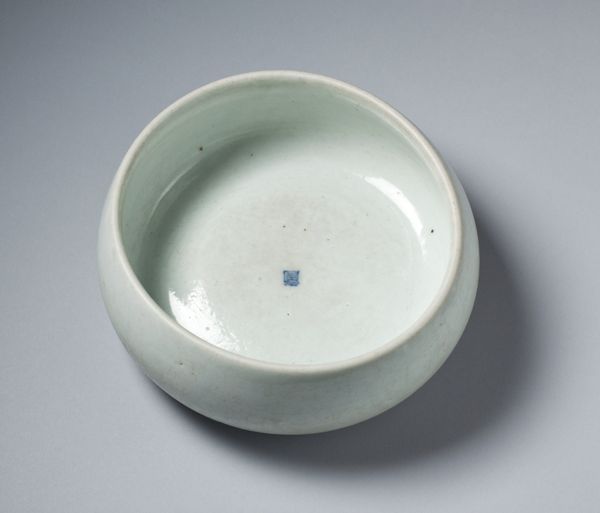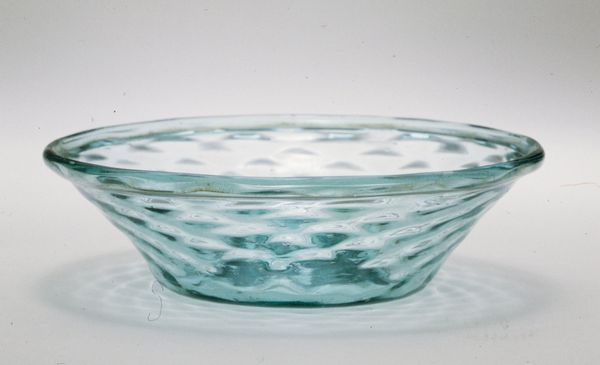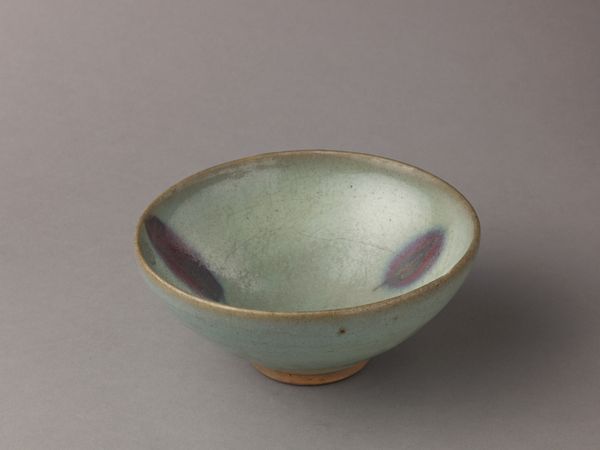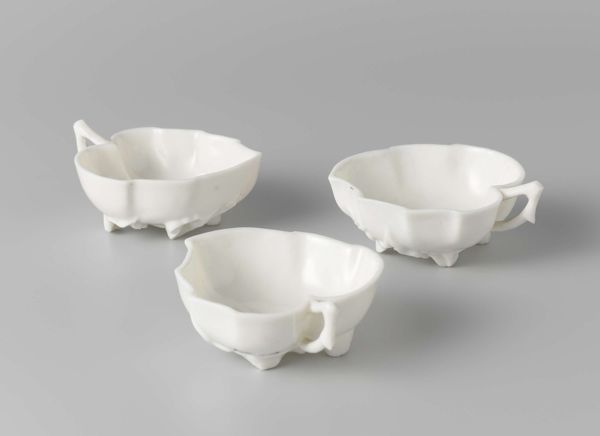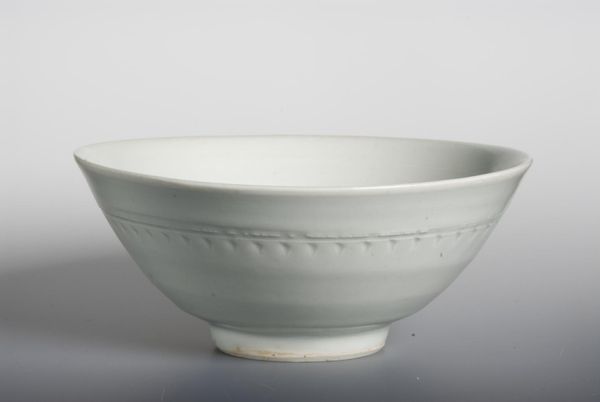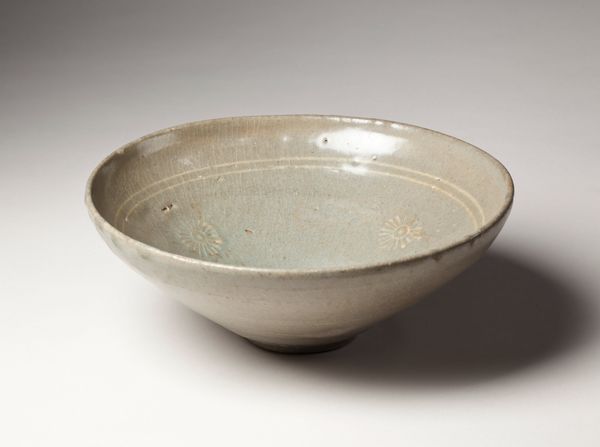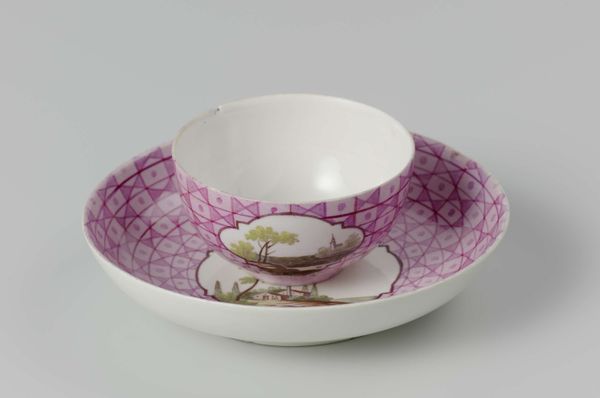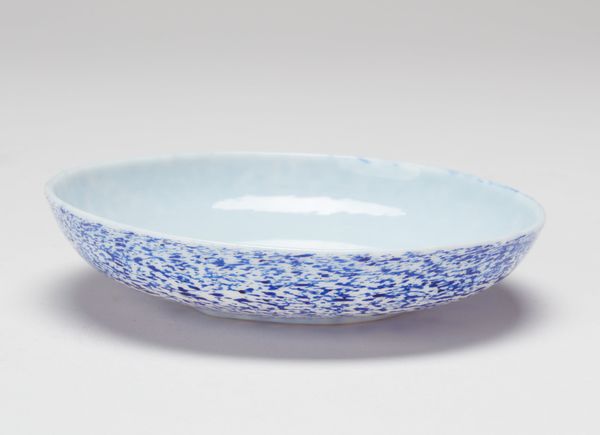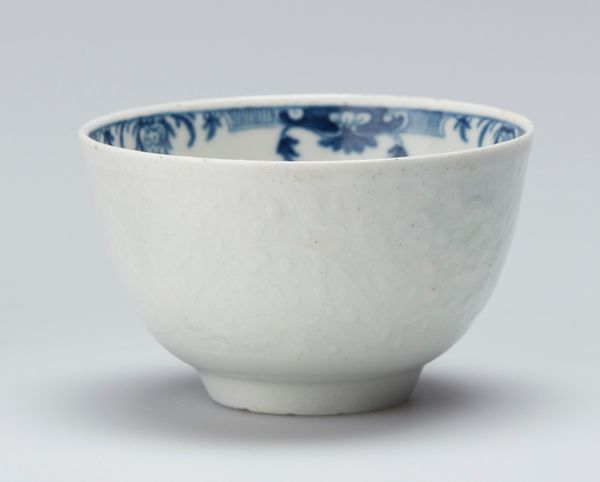
relief, ceramic
#
asian-art
#
relief
#
ceramic
#
figuration
#
stoneware
#
ceramic
Dimensions: height 5.3 cm, height 4.3 cm, diameter 7.8 cm, diameter 3.9 cm, height 2.3 cm, diameter 11.2 cm, diameter 5.8 cm
Copyright: Rijks Museum: Open Domain
Curator: Looking at this pair of stoneware pieces, I immediately feel a sense of quiet, like stepping into a serene landscape painting. Editor: Indeed, this is “Bell-shaped cup and saucer with two hares and the moon in relief” by Masato Imaizumi, created around 2002. It’s a striking example of contemporary Japanese ceramic art. We see two hares nestled under the moon's soft glow, rendered in relief against the pale green celadon glaze. The moon is itself a reference to broader East Asian mythologies surrounding moon hares. Curator: The relief work is particularly compelling. It seems to blend into the material almost seamlessly, giving the piece a subtle texture. What statement is it trying to make? Editor: This artist masterfully connects Japanese traditions with global contemporary aesthetics. Historically, the figure of a hare under the moon appears frequently in East Asian art, often carrying connotations of immortality or auspiciousness. Its modern appeal may lie in how this cup and saucer bring those connections to the everyday – the ritual of tea, say. Curator: So the domestic sphere becomes a stage for these cultural performances? It is also intriguing how Imaizumi has positioned these sculptures – as objects of the quotidian, yet carrying the gravity of cultural weight and symbolism. Editor: Precisely. And that positions us, the users, in an interesting way, prompting us to interact with that weight. Furthermore, I wonder what the politics are of ‘exporting’ an ‘exoticized’ artistic tradition into western art spaces like ours? Are we partaking in the continued cycle of art spaces reproducing asymmetrical relations of power? Curator: The act of crafting becomes an intersection between the artistic self and global art circuits. So, reflecting on Masato Imaizumi's stoneware pairing, I appreciate how the interplay between history, material, and craftsmanship makes for a subtle yet provocative artwork. Editor: For me, I see in this stoneware not merely a cultural artifact, but an embodiment of complex dialogues: a silent participant within institutional power dynamics. I'm left with questions about how these narratives of cultural transmission play out on a larger scale.
Comments
No comments
Be the first to comment and join the conversation on the ultimate creative platform.
